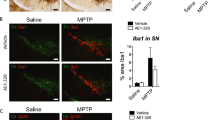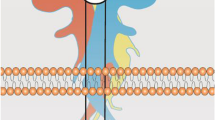Abstract
Neuroinflammation has always been of concern in the pathogenesis of Alzheimer’s disease (AD). As a major inflammatory mediator, prostaglandin E2(PGE2) plays an important role in the inflammatory process of AD. Up to now, there is still controversy on the neuroprotective or neurotoxic role of PGE2. However, the role of PGE2 in neurodegeneration may be far more complex, due to the 4 EP receptor subtypes. This article aims to summarize the relationship between PGE2 receptor EP subtypes and AD. It is believed that a better understanding of the PGE2 receptor EP subtypes may help to clarify the relation between inflammation and AD, and to develop novel therapeutic strategies targeting specific EP receptor for AD treatment.
摘要
神经炎症在阿尔茨海默病(Alzheimer’s disease, AD)发病机制中的作用一直备受关注。 前列腺素E2(PGE2)作为 一个主要的炎症介质, 在AD的炎症过程中发挥着重要的作用 。 然而, 目前关于PGE2 对神经元是保护还是损害仍 存有分歧。 PGE2 受体存在EP1-4 四类亚型, 因此要探讨PGE2在神经元损伤中扮演的角色, 我们需综合考虑下游信 号通路的作用。 本文旨在综述PGE2受体EP亚型与AD的关系。 对PGE2受体EP亚型的进一步研究将有助于阐明炎 症与AD 的联系, 为AD 治疗找到新的靶点。
Similar content being viewed by others
References
Wan Y, Wang G, Chen SD. Genetic predisposition to inflammation: a new risk factor of Alzheimer’s disease. Neurosci Bull 2008, 24:314–322.
Akiyama H, Barger S, Barnum S, Bradt B, Bauer J, Cole GM, et al. Inflammation and Alzheimer’s disease. Neurobiol Aging 2000, 21: 383–421.
Etminan M, Gill S, Samii A. Effect of non-steroidal anti-inflammatory drugs on risk of Alzheimer’s disease: systematic review and meta-analysis of observational studies. BMJ 2003, 327: 128.
in t’ Veld BA, Ruitenberg A, Hofman A, Launer LJ, van Duijn CM, Stijnen T, et al. Nonsteroidal antiinflammatory drugs and the risk of Alzheimer’s disease. N Engl J Med 2001, 345: 1515–1521.
Szekely CA, Thorne JE, Zandi PP, Ek M, Messias E, Breitner JC, et al. Nonsteroidal anti-inflammatory drugs for the prevention of Alzheimer’s disease: a systematic review. Neuroepidemiology 2004, 23: 159–169.
Jantzen PT, Connor KE, DiCarlo G, Wenk GL, Wallace JL, Rojiani AM, et al. Microglial activation and beta-amyloid deposit reduction caused by a nitric oxide-releasing nonsteroidal anti-inflammatory drug in amyloid precursor protein plus presenilin-1 transgenic mice. J Neurosci 2002, 22: 2246–2254.
Lim GP, Yang F, Chu T, Chen P, Beech W, Teter B, et al. Ibuprofen suppresses plaque pathology and inflammation in a mouse model for Alzheimer’s disease. J Neurosci 2000, 20: 5709–5714.
Yan Q, Zhang J, Liu H, Babu-Khan S, Vassar R, Biere AL, et al. Anti-inflammatory drug therapy alters beta-amyloid processing and deposition in an animal model of Alzheimer’s disease. J Neurosci 2003, 23: 7504–7509.
Szekely CA, Green RC, Breitner JC, Ostbye T, Beiser AS, Corrada MM, et al. No advantage of A beta 42-lowering NSAIDs for prevention of Alzheimer dementia in six pooled cohort studies. Neurology 2008, 70: 2291–2298.
Arvanitakis Z, Grodstein F, Bienias JL, Schneider JA, Wilson RS, Kelly JF, et al. Relation of NSAIDs to incident AD, change in cognitive function, and AD pathology. Neurology 2008, 70:2219–2225.
Zhang B, Du GH. Anti-inflammatory mechanism of non-steroidal anti-inflammatory drugs. Chin Pharm Bull 2005, 21: 905–910.
Weggen S, Eriksen JL, Sagi SA, Pietrzik CU, Golde TE, Koo EH. Abeta42-lowering nonsteroidal anti-inflammatory drugs preserve intramembrane cleavage of the amyloid precursor protein (APP) and ErbB-4 receptor and signaling through the APP intracellular domain. J Biol Chem 2003, 278: 30748–30754.
Hoshino T, Nakaya T, Homan T, Tanaka K, Sugimoto Y, Araki W, et al. Involvement of prostaglandin E2 in production of amyloid-beta peptides both in vitro and in vivo. J Biol Chem 2007, 282: 32676–32688.
Liang X, Wang Q, Hand T, Wu L, Breyer RM, Montine TJ, et al. Deletion of the prostaglandin E2 EP2 receptor reduces oxidative damage and amyloid burden in a model of Alzheimer’s disease. J Neurosci 2005, 25: 10180–10187.
Takadera T, Shiraishi Y, Ohyashiki T. Prostaglandin E2 induced caspase-dependent apoptosis possibly through activation of EP2 receptors in cultured hippocampal neurons. Neurochem Int 2004, 45: 713–719.
Echeverria V, Clerman A, Dore S. Stimulation of PGE receptors EP2 and EP4 protects cultured neurons against oxidative stress and cell death following beta-amyloid exposure. Eur J Neurosci 2005, 22: 2199–2206.
Slawik H, Volk B, Fiebich B, Hull M. Microglial expression of prostaglandin EP3 receptor in excitotoxic lesions in the rat striatum. Neurochem Int 2004, 45: 653–660.
Shie FS, Montine KS, Breyer RM, Montine TJ. Microglial EP2 as a new target to increase amyloid beta phagocytosis and decrease amyloid beta-induced damage to neurons. Brain Pathol 2005, 15: 134–138.
McCullough L, Wu L, Haughey N, Liang X, Hand T, Wang Q, et al. Neuroprotective function of the PGE2 EP2 receptor in cerebral ischemia. J Neurosci 2004, 24: 257–268.
Liu D, Wu L, Breyer R, Mattson MP, Andreasson K. Neuroprotection by the PGE2 EP2 receptor in permanent focal cerebral ischemia. Ann Neurol 2005, 57: 758–761.
Breyer RM, Bagdassarian CK, Myers SA, Breyer MD. Prostanoid receptors: subtypes and signaling. Annu Rev Pharmacol Toxicol 2001, 41: 661–690.
Wilson RJ, Rhodes SA, Wood RL, Shield VJ, Noel LS, Gray DW, et al. Functional pharmacology of human prostanoid EP2 and EP4 receptors. Eur J Pharmacol 2004, 501: 49–58.
Fu**o H, Salvi S, Regan JW. Differential regulation of phosphorylation of the cAMP response element-binding protein after activation of EP2 and EP4 prostanoid receptors by prostaglandin E2. Mol Pharmacol 2005, 68: 251–259.
Sugimoto Y, Narumiya S. Prostaglandin E receptors. J Biol Chem 2007, 282: 11613–11617.
Shie FS, Breyer RM, Montine TJ. Microglia lacking E Prostanoid Receptor subtype 2 have enhanced Abeta phagocytosis yet lack Abeta-activated neurotoxicity. Am J Pathol 2005, 166: 1163–1172.
Ahmad AS, Saleem S, Ahmad M, Dore S. Prostaglandin EP1 receptor contributes to excitotoxicity and focal ischemic brain damage. Toxicol Sci 2006, 89: 265–270.
Takadera T, Ohyashiki T. Prostaglandin E2 deteriorates N-methyl-D-aspartate receptor-mediated cytotoxicity possibly by activating EP2 receptors in cultured cortical neurons. Life Sci 2006, 78: 1878–1883.
Pooler AM, Arjona AA, Lee RK, Wurtman RJ. Prostaglandin E2 regulates amyloid precursor protein expression via the EP2 receptor in cultured rat microglia. Neurosci Lett 2004, 362: 127–130.
Wu L, Wang Q, Liang X, Andreasson K. Divergent effects of prostaglandin receptor signaling on neuronal survival. Neurosci Lett 2007, 421: 253–258.
Lee EO, Shin YJ, Chong YH. Mechanisms involved in prostaglandin E2-mediated neuroprotection against TNF-alpha: possible involvement of multiple signal transduction and betacatenin/T-cell factor. J Neuroimmunol 2004, 155: 21–31.
Kazanietz MG, Caloca MJ, Eroles P, Fujii T, Garcia-Bermejo ML, Reilly M, et al. Pharmacology of the receptors for the phorbol ester tumor promoters: multiple receptors with different biochemical properties. Biochem Pharmacol 2000, 60: 1417–1424.
Hui L, Pei DS, Zhang QG, Guan QH, Zhang GY. The neuroprotection of insulin on ischemic brain injury in rat hippocampus through negative regulation of JNK signaling pathway by PI3K/Akt activation. Brain Res 2005, 1052: 1–9.
Amano H, Hayashi I, Endo H, Kitasato H, Yamashina S, Maruyama T, et al. Host prostaglandin E(2)-EP3 signaling regulates tumor-associated angiogenesis and tumor growth. J Exp Med 2003, 197: 221–232.
Kabashima K, Saji T, Murata T, Nagamachi M, Matsuoka T, Segi E, et al. The prostaglandin receptor EP4 suppresses colitis, mucosal damage and CD4 cell activation in the gut. J Clin Invest 2002, 109: 883–893.
Montine TJ, Milatovic D, Gupta RC, Valyi-Nagy T, Morrow JD, Breyer RM. Neuronal oxidative damage from activated innate immunity is EP2 receptor-dependent. J Neurochem 2002, 83:463–470.
Shie FS, Montine KS, Breyer RM, Montine TJ. Microglial EP2 is critical to neurotoxicity from activated cerebral innate immunity. Glia 2005, 52: 70–77.
** J, Shie FS, Liu J, Wang Y, Davis J, Schantz AM, et al. Prostaglandin E2 receptor subtype 2 (EP2) regulates microglial activation and associated neurotoxicity induced by aggregated alphasynuclein. J Neuroinflammation 2007, 4: 2.
Chen C, Magee JC, Bazan NG. Cyclooxygenase-2 regulates prostaglandin E2 signaling in hippocampal long-term synaptic plasticity. J Neurophysiol 2002, 87: 2851–2857.
Yagami T, Nakazato H, Ueda K, Asakura K, Kuroda T, Hata S, et al. Prostaglandin E2 rescues cortical neurons from amyloid beta protein-induced apoptosis. Brain Res 2003, 959: 328–335.
Takahashi Y, Hayashi I, Tominari Y, Rikimaru K, Morohashi Y, Kan T, et al. Sulindac sulfide is a noncompetitive gammasecretase inhibitor that preferentially reduces Abeta 42 generation. J Biol Chem 2003, 278: 18664–18670.
Weggen S, Eriksen JL, Sagi SA, Pietrzik CU, Ozols V, Fauq A, et al. Evidence that nonsteroidal anti-inflammatory drugs decrease amyloid beta 42 production by direct modulation of gammasecretase activity. J Biol Chem 2003, 278: 31831–31837.
Li J, Liang X, Wang Q, Breyer RM, McCullough L, Andreasson K. Misoprostol, an anti-ulcer agent and PGE2 receptor agonist, protects against cerebral ischemia. Neurosci Lett 2008, 438:210–215.
Kawano T, Anrather J, Zhou P, Park L, Wang G, Frys KA, et al. Prostaglandin E2 EP1 receptors: downstream effectors of COX-2 neurotoxicity. Nat Med 2006, 12: 225–229.
Bilak M, Wu L, Wang Q, Haughey N, Conant K, St Hillaire C, et al. PGE2 receptors rescue motor neurons in a model of amyotrophic lateral sclerosis. Ann Neurol 2004, 56: 240–248.
Brunet A, Datta SR, Greenberg ME. Transcription-dependent and -independent control of neuronal survival by the PI3K-Akt signaling pathway. Curr Opin Neurobiol 2001, 11: 297–305.
Chen W, Shen YD, Yao HP, Zhao GS. Inhibition of lipopolysaccharide-induced expression of cyclooxygenase-2 in PC-12 cells by triptolide. Chin Pharm J 2005, 40: 274–277.
Author information
Authors and Affiliations
Corresponding author
Rights and permissions
About this article
Cite this article
Wei, LL., Shen, YD., Zhang, YC. et al. Roles of the prostaglandin E2 receptors EP subtypes in Alzheimer’s disease. Neurosci. Bull. 26, 77–84 (2010). https://doi.org/10.1007/s12264-010-0703-z
Received:
Accepted:
Published:
Issue Date:
DOI: https://doi.org/10.1007/s12264-010-0703-z




